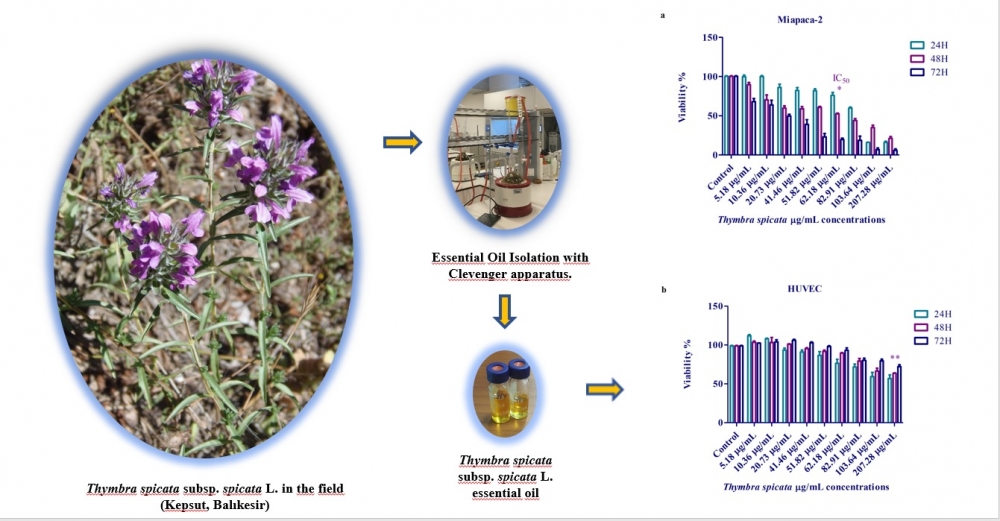JOURNAL 2671
Records of Natural Products
Year: 2023 Issue: 4 July-August
p.628 - 647
Viewed 3158 times.
GRAPHICAL ABSTRACT

ABSTRACT
Thymbra spicata subsp. spicata L. is a member of the Lamiaceae family, which is used in Türkiye against various health issues among other uses. The main components of T. spicata essential oil (TE) were identified as carvacrol (52.3%) and p-cymene (21.1%) using GC-FID and GC/MS. The in vitro effects of TE on Miapaca-2 and HUVEC cell lines were reported for the first time. The initial results showed that TE applied to Miapaca-2 cell lines at concentrations of ≥62.18 g/mL for 48 hours could reduce cell growth and induce apoptosis. The application of relatively high concentrations of TE (≥82.91 g/mL) significantly (P<0.001) suppressed cell growth. Administration of relatively high TE concentrations (≥82.91 g/mL) significantly (P<0.001) suppressed cell growth. Concentrations of TE lower than 20.73 g/mL did not affect the viability of the HUVEC cell line in 48 hours. The IC50 value for Miapaca-2 cells was 62.18 µg/mL, and HUVEC cells’ IC50 value was 263.97 µg/mL for 48h. The number of apoptotic cells in Miapaca-2 (55±5%) and HUVEC (38.33±6%) were significantly higher (P<0.001). Significantly lower migration rates (P<0.001) were seen for Miapaca-2 (52±5%) and HUVEC cell lines (64±1.67%).
KEYWORDS- Thymbra spicata subsp. spicata
- cancer
- apoptosis
- wound-healing
- cellular-migration
- proliferation